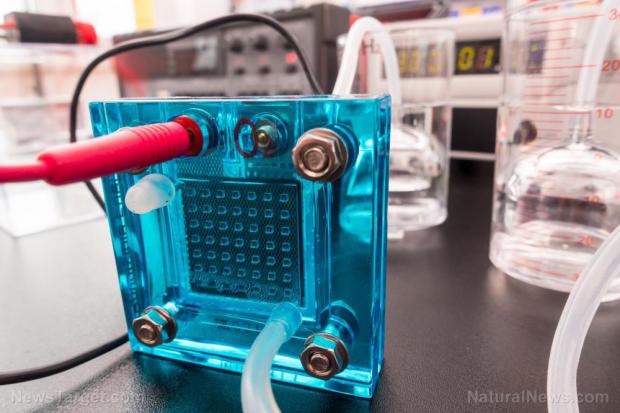
Breaking News
 Shadowy Forces Behind JD Vance's Rise and Grooming as MAGA Successor
Shadowy Forces Behind JD Vance's Rise and Grooming as MAGA Successor
 Who Is Paying Alberta, Canada, Premier Danielle Smith if Not Big Pharma?
Who Is Paying Alberta, Canada, Premier Danielle Smith if Not Big Pharma?
 RFK Jr. kills off $122M in grants to LGBT and diversity causes in sweeping action
RFK Jr. kills off $122M in grants to LGBT and diversity causes in sweeping action
 Trump Unveils Another $825M Arms Sale To Ukraine, While Talking Peace
Trump Unveils Another $825M Arms Sale To Ukraine, While Talking Peace
Top Tech News
 NVIDIA just announced the T5000 robot brain microprocessor that can power TERMINATORS
NVIDIA just announced the T5000 robot brain microprocessor that can power TERMINATORS
 Two-story family home was 3D-printed in just 18 hours
Two-story family home was 3D-printed in just 18 hours
 This Hypersonic Space Plane Will Fly From London to N.Y.C. in an Hour
This Hypersonic Space Plane Will Fly From London to N.Y.C. in an Hour
 Magnetic Fields Reshape the Movement of Sound Waves in a Stunning Discovery
Magnetic Fields Reshape the Movement of Sound Waves in a Stunning Discovery
 There are studies that have shown that there is a peptide that can completely regenerate nerves
There are studies that have shown that there is a peptide that can completely regenerate nerves
 Swedish startup unveils Starlink alternative - that Musk can't switch off
Swedish startup unveils Starlink alternative - that Musk can't switch off
 Video Games At 30,000 Feet? Starlink's Airline Rollout Is Making It Reality
Video Games At 30,000 Feet? Starlink's Airline Rollout Is Making It Reality
 Automating Pregnancy through Robot Surrogates
Automating Pregnancy through Robot Surrogates
 Grok 4 Vending Machine Win, Stealth Grok 4 coding Leading to Possible AGI with Grok 5
Grok 4 Vending Machine Win, Stealth Grok 4 coding Leading to Possible AGI with Grok 5
New catalyst material can help spur the rise of lithium-sulfur batteries

But LSBs can only be recharged a few times before degrading. Now, South Korean researchers might have just found the right catalyst to improve the lifespan and performance of these batteries. In a study published in the journal ChemSusChem, the researchers described how they used the compound cobalt oxalate to reverse the degradation of LSBs.
Improving the lifespan of lithium-sulfur batteries
LSBs are not yet widely used today because charging them causes a buildup of solid lithium sulfide and liquid lithium polysulfide. In turn, these chemical deposits degrade the sulfur cathode (positively charged electrode) and lithium anode (negatively charged electrode), which effectively reduces the lifespan of the batteries and may even cause them to catch fire.
The researchers then looked for a catalyst – a substance that increases the rate of a chemical reaction without undergoing any permanent chemical change – that can make the degradation of LSBs reversible during use.
"While looking for a new electrocatalyst for the LSBs, we recalled a previous study we had performed with cobalt oxalate in which we had found that negatively charged ions can easily adsorb on this material's surface during electrolysis," said Jaeyoung Lee, a professor of environmental engineering at the Gwangju Institute of Science and Technology in South Korea and one of the study researchers.
This led Lee and his team to hypothesize that cobalt oxalate could have a protective effect against the chemical deposits. To test their hypothesis, they made an LSB and added a layer of cobalt oxalate on the surface of the sulfur cathode.

 HERE COMES THE MOTHERSHIP
HERE COMES THE MOTHERSHIP

